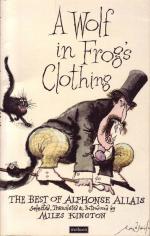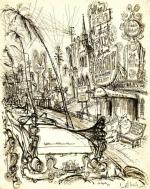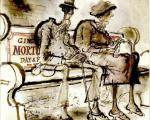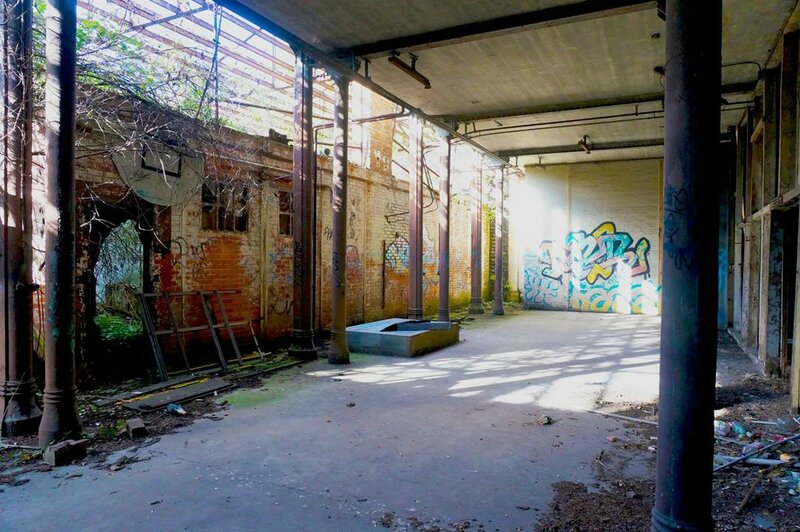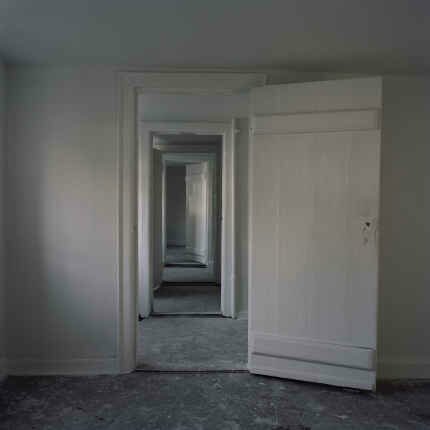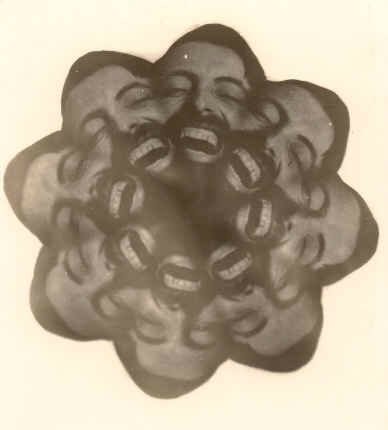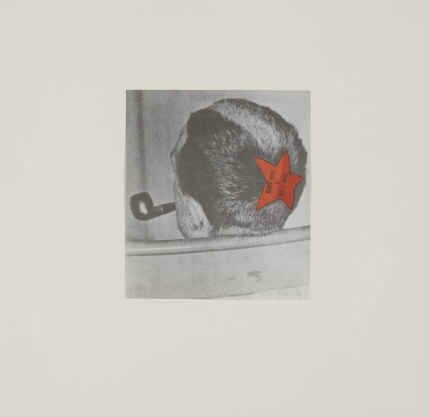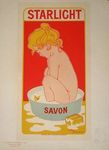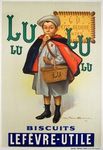Just as communications dominate the 21st century, the growth of various means of printed communication greatly influenced 1890s Britain. In particular the growth of the popular illustrated press, the use of ambitious advertising methods, the rise of the poster as art form, the illustrated literary magazine, followed by the more mainstream colour illustrated gift book.
All of these, nurtured by new printing technologies, helped to propagate a new aesthetic as well as establish the careers of many of the artist-illustrators. The British middle classes were hungry for novelty and sophistication and, however ephemeral or unusual the productions, they had the money to sustain them.
When the illustrator Aubrey Beardsley edited the Yellow Book, the short-lived scandalous literary magazine, the initial print run of 7,000 copies quickly sold out. The editorial reflected Beardsley’s belief that his task was to shock a complacent public, as ‘the grotesque is the only alternative to insipid commonplace’.
A major figure in the publishing world of the 1890s was the enterprising publisher John Lane of the Bodley Head. He eventually held the undisputed position as the man who made decadence pay.
As the publisher of Beardsley, Oscar Wilde and many artist-illustrators, he had an astute eye for new talent and was a master of promotion. Noted for fanning the flames of controversy by publishing daring authors’ works in rarefied limited editions, he sought to promote an air of exclusivity that appealed to a sophisticated readership.
Lane’s authors and designers developed their distinctive approaches by, among other influences further afield, emulating the French – it had been said that English decadence took its inspiration from ‘the poisonous honey of France’. They gathered in the cafes of London and Paris to exchange ideas and learn of the newest influences and movements.
Japan had been an artistic magnet since it had been opened up to Western trade in 1853; by the 1870s, when the Arts and Crafts movement’s bold, stark furniture designs emerged, it was clear the designers had embraced the minimal Oriental approach as a new and exciting direction.
The 20th century brought a hunger for colour, escapism and especially the infectious delights of the exotic to help people forget the terrible horrors of the First World War. The highly lucrative children’s market also grew: William Nicholson’s classic, The Un-Common Cat, which had gone into numerous editions in the previous century, was dismembered and framed to decorate the nurseries of the Empire well into the 20th century; a second more lavish edition was then sold to the nation’s doting parents, or what the Art Journal called ‘children of a larger growth’.
Publishers capitalised on the change in their market. They beefed up their production and offered books of lavish colour plates, like the elaborately produced editions of Rudyard Kipling’s Jungle Book. Dense black-and-white wood engravings of the 19th century gave way to the three-colour printing process that soon revolutionised the illustrated book market.
In fact, this ingenious technical process was derived from the half-tone printing of black-and-white images first perfected as long ago as 1882, but only put into general use for colour work two decades or so later.
Artists became household names, their annual illustrated books eagerly awaited and issued in expensive, lavishly bound, limited collectors’ editions, signed by the artist, and a less expensive trade edition, which often sold in its thousands. The illustrated gift book was indeed big business. Moreover, the artists often sold their original artwork at the specially themed publicity exhibitions in London’s Bond Street, which gave them an extra income and helped boost their fame.
For many children as well as adults, fantasy meant fairies. Their ethereal world at the bottom of the garden provided a rich and satisfying means of escapism. ‘I used to half believe in and wholly play with fairies when I was a child,’ a mature Beatrix Potter recalled.
She confided in her journal how the archetypal images of fairies and fairyland greatly inspired artists of her generation: ‘I cannot tell what possesses me with the fancy that they laugh and clap their hands, especially the little ones that grow in troops and rings amongst dead leaves in the woods. I suppose it is the fairy rings, the myriads of fairy fungi that start into life in autumn woods.’
With the rise of the wealthy Edwardian middle classes came a yearning for an escape from the effects of industrialisation and the urban sprawl that accompanied it. Many felt that the growth of the suburbs that encircled the cities and spread into the landscape greatly threatened the true English countryside.
Enterprising publishers viewed this new ruralist marketplace as an untapped treasure, a rich seam from which to produce well-illustrated escapist volumes inspired by the beauty of Mother Nature for a jaded urban public.
It is not surprising that when Kenneth Grahame first published The Wind in the Willows in 1908, a misguided Times book critic, obviously hoping for more naturalist accuracy, dismissed the tale as ultimately disappointing because ‘as a contribution to natural history the book is negligible’.
Clearly there was a real thirst for natural knowledge, however superficial, and if a book could inspire, especially with illustrations celebrating the beauty of nature, then there was a ready market for it.
AUBREY BEARDSLEY
(1872-1898) Since Aubrey Beardsley’s career lasted a mere six years – he died from tuberculosis at the age of 25 – his huge influence is all the more remarkable. His work is aligned to his youthfulness, especially his rebel-like regard for the shocking and an obsessive attraction to the prurient. Wholly self-taught, he found inspiration in such diverse pictorial influences as Japanese print, the work of the children’s book illustrator Kate Greenaway, the Italian Renaissance artists Mantegna and Botticelli, and his champion, the artist Edward Burne-Jones.
It was his biographer, working 10 years after his death, who pierced the veil of secrecy surrounding the artist’s working methods. ‘He sketched everything in pencil, at first covering the paper with apparent scrawls, constantly rubbed out and blocked in again, until the whole surface became raddled from pencil, India rubber and knife: over this incoherent surface he worked in Chinese ink with a gold pen… so every drawing was invented, built up and completed on the same sheet of paper.’
In the work he later produced from 1895-98, Beardsley experimented with pencil shading and wash to accommodate the photoengraver that produced intricate masterpieces and spawned a devoted school of artistic disciples.
Among Beardsley’s outstanding achievements are covers for the literary magazine the Yellow Book, illustrations for Oscar Wilde’s Salome, drawings for Alexander Pope’s The Rape of the Lock and his masterpiece of classical eroticism for Aristophenes’s Lysistrata. Today, Beardsley is looked on as a true precursor of the Modern Age, a pioneering inventor of abstractionism.
ARTHUR RACKHAM (1867-1939)
One of the most successful book illustrators of the 20th century, Arthur Rackham created about 150 illustrated books, published 3,000 black-and-white and colour illustrations as well as painting in oil and watercolour for galleries. The Rackham style, with its grotesque trees and ghoulish creatures, the fairy tales of sylvan glades and classical maidens, have charmed, terrified and delighted generations of adults and children alike.
While a clerk at the Westminster Fire Office, for eight years he attended evening classes at the Lambeth School of Art where he developed drawing skills. An early commission came from the publishers JM Dent to illustrate a new edition of The Ingoldsby Legends in black and white and colour. Other work soon followed, including illustrated editions of the Grimm fairy tales and Jonathan Swift’s Gulliver’s Travels.
But it was with his 51 drawings for Rip Van Winkle that he achieved serious recognition. Illustrated volumes of the classic fairy tales Aesop’s Fables and Mother Goose followed, and with these two books his children’s market was secured.
Rackham also turned his hand to adult themes, creating what is considered to be his masterpiece for Shakespeare’s A Midsummer Night’s Dream. His Wagnerian illustrations (The Rhinegold & the Valkyrie followed by Siegfried & the Twilight of the Gods) gave full rein to his mastery of atmosphere and ability to create a terrifying Gothic vision.
The Rackham gift book set a trend among publishers. Each beautifully presented volume was issued for maximum sales. Published three months before Christmas and accompanied by an exhibition and sale of the original drawings at the Leicester Galleries, London, the formula sold in its thousands.
Rackham found inspiration in Albrecht Dürer’s woodcuts and the fantasies of Hieronymus Boschists, but he also kept a collection of the more grotesque caricatures of Honoré Daumier, which inspired his own fantastical haracterisations.
His 50 colour plates of JM Barrie’s Peter Pan were a homage to this colour sense. The book sold 14,000 copies of the six shilling edition alone. Never a sympathiser of the fast-paced modern world, he abhorred inventions like photography, which threatened his career.
EDMUND DULAC (1882-1953)
A French-born polymath designer, Edmund Dulac was an artist of not only exotic illustrations, but also of postage stamps, posters, banknotes, bookplates, playing cards, tapestries, carpets and furniture. As a student at the Ecole des Beaux Arts, he was known as ‘l’Anglais’, for his obsessive love of everything English. He dressed constantly in tweeds and at the age of 22 he left France for England and became a British citizen seven years later.
Dulac brought his own unique vision to the world of Art Deco, which had previously been dominated by a staunchly English narrative style, with its accent on clarity and most of all on a black-and-white line. Dulac loved to mix styles. He painted with exotic colours and created his own language, borrowing heavily from the Orient, the Near East and the abstract forms of Africa.
His chief rival was Arthur Rackham, whose medieval palette contrasted with the Frenchman’s more colourful themes. In 1907 Dulac was commissioned to illustrate a new edition of stories from The Arabian Nights and it was this that secured his reputation as an inventive new force in publishing. This book gave Rackham an opportunity to indulge in the softness of the gleam of moonlight on stone, while his use of ultramarine, indigo and Prussian blue, mingled with purples and violets, brought to the illustrations the calm and mystery of Eastern nights. ‘He would have chosen some dream city of the Orient for his birthplace, a Persian princess for his mother and an artist of the Ming dynasty for his father,’ said an admirer at his first American exhibition.
The Arabian Nights inaugurated a collaboration between Dulac, his publisher Hodder & Stoughton and the Leicester Galleries, London, that lasted for eight years. Exhibitions of the original illustrations were held, each based on the long-awaited annual gift book: The Arabian Nights were followed by The Tempest, The Rubaiyat of Omar Khayyam, Stories from Hans Andersen, The Bells and Other Poems by Edgar Allen Poe, Princess Badoura, Sinbad the Sailor and Other Stories, and Edmund Dulac’s Fairy Book. During his lifetime, his output of some 116 titles made him a household name throughout the world.
Dulac was an expert revolver shot and dedicated musician who played the bamboo flute – which he made himself – with his nose. He loved dressing up all his life, especially in the Oriental costumes he designed for himself and his wife.
KAY NIELSEN (1886-1957)
One of the most influential émigré artists, Kay Nielsen was born in Copenhagen, the son of an actor who managed the Royal Copenhagen Theatre and a famous actress mother. Young Kay was tutored privately from the age of 12. His adoring mother had loved to read her son his native Danish folk tale and legends, and local Danish folklore came to dominate his illustrations.
Nielsen earnestly believed that folk tales were essential to the lives of people of all ages and while they were often populated by the exotic and the bizarre, it was only in pure folk tales that man’s predicament could be effectively symbolised.
At the age of 17, Nielsen left Denmark to study art at Paris’s prestigious Académie Julian. By this time, art students intent on commercial careers in illustration realised that the best opportunities for advancement lay in England.
He arrived with a portfolio of largely black-and-white ink fantasy drawings he called ‘The Book of Death’, which he hoped to exhibit and sell. On the strength of this debut he was commissioned to illustrate tales by Sir Arthur Quiller-Couch, entitled In Powder and Crinoline. The book quickly secured his reputation as a talent to watch.
Nielsen delighted in colourful exuberance, pattern and an Oriental inventiveness. His winning formula was derived from his folkloric background. Nielsen also borrowed from a love of early Italian painting, delicate Persian miniatures, and Indian and Chinese landscapes, which he mixed and borrowed in a process he called ‘artistic wandering’.
From the French he derived a ‘fashion plate’ simplicity; Nielsen women were always expertly dressed in intricate confections similar to the period’s finest couturiers.
The artist illustrated Hansel and Gretel: Stories from the Brothers Grimm, and worked on a series of lavish and mildly erotic gouache illustrations for a Danish translation of The Arabian Nights. Nielsen’s masterpiece is considered to be his colour plates that illustrate the Scandinavian folk tales compiled in East of the Sun and West of the Moon: Old Tales from the North. With this one work he established himself as a master of an international aesthetic more seductive, rarefied and appealing than any of his rivals. In later years, he emigrated to America where he worked for the Disney film studios on Fantasia.
A recent champion claims that Nielsen did not merely offer an escape from the mindlessness of modern existence, but ‘finds the imagination can conceive of infinite possibility and grasp an alternative vision where hope remains undimmed’.
CHARLES ROBINSON (1870-1937)
One of the period’s finest children’s illustrators, Charles Robinson was long associated with visions of cherubic children and their adoring mothers. A master at pen and ink and atmospheric watercolour, he was a prolific illustrator, his books sold in great numbers and offered strong competition to his peer Arthur Rackham.
Born into a large family of printer-craftsmen, the artists Thomas and William Heath Robinson were among his siblings. Although his brothers received full-time art education, due to financial restraints, Charles had to make do with evening classes.
Robinson’s first and most important commission was for Robert Louis Stevenson’s A Child’s Garden of Verses, first published by John Lane in a limited edition of 150 copies. It was reprinted many times up until 1952, as the New York Bookman noted, Robinson ‘had depicted childhood in all its remoteness from grown-up land, in its heroic and fantastic imagining, in its long thoughts and short sight.’
The artist loved children (and eventually had six of his own). They gave Robinson his trademark style, the fearless child with thick wavy hair and rustic clothes. His public expected of him this graphic evocation of childhood played out by the innocent, and not so innocent.
He produced lavish watercolour plates for a version of Percy Bysshe Shelley’s The Sensitive Plant and mixed a heady exoticism in the colour plates for an edition of Oscar Wilde’s The Happy Prince in 1913, but returned relentlessly to his proven market, that of his popular collections of fairy tales.
Robinson was talented enough to borrow from the past, from the townscapes and Gothicism of Albrecht Dürer’s woodcuts, which he transformed into fairy kingdoms, and above all from Japanese prints with their spare spaces and bold flat colours and striking perspectives.
On his brother’s death, William Heath Robinson eulogised, ‘There was always something of youth and being on holiday about Charles.’
- The text and biographies are an edited and abridged extract from ‘The Age of Enchantment’ by Rodney Engen (Dulwich Picture Gallery/Scala Books, £25).
- The exhibition of the same name runs from November 28 to February 17, at the Dulwich Picture Gallery (dulwichpicturegallery.org.uk)






















 Larry Mayes, Scene of arrest, The Royal Inn, Gary, Indiana
Larry Mayes, Scene of arrest, The Royal Inn, Gary, Indiana





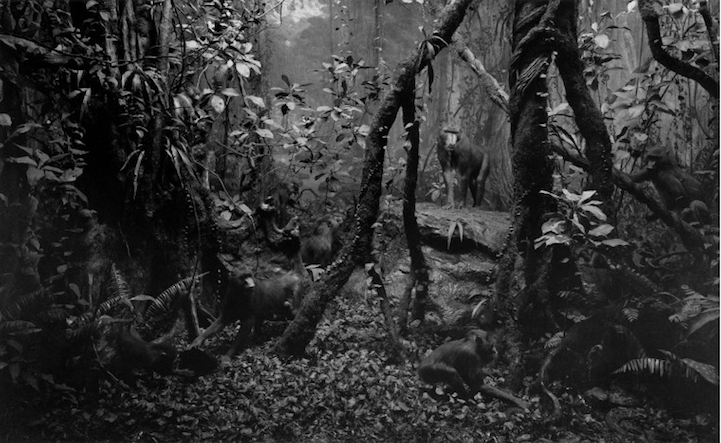
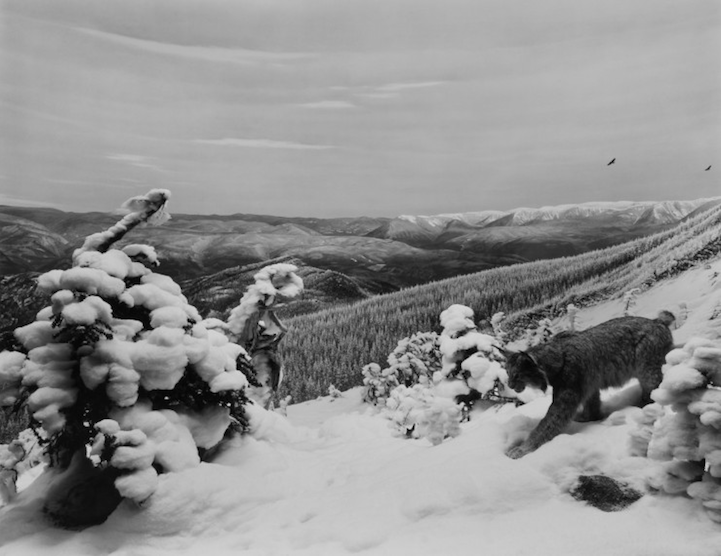











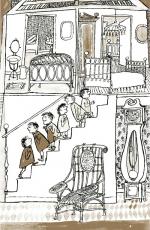



 who has died aged 91, will always be associated with St Trinian's, the anarchic girls' boarding school he created in pen and ink in the 1940s, which inspired a long-running series of films. Searle and St Trinian's go together like Petruchio and Kate; except that Searle created his own shrews and lived with their reputation for the rest of his life.
who has died aged 91, will always be associated with St Trinian's, the anarchic girls' boarding school he created in pen and ink in the 1940s, which inspired a long-running series of films. Searle and St Trinian's go together like Petruchio and Kate; except that Searle created his own shrews and lived with their reputation for the rest of his life.
